Pop Up, Tune In Leverage Popup Surveys to Maximize Engagement
Read More
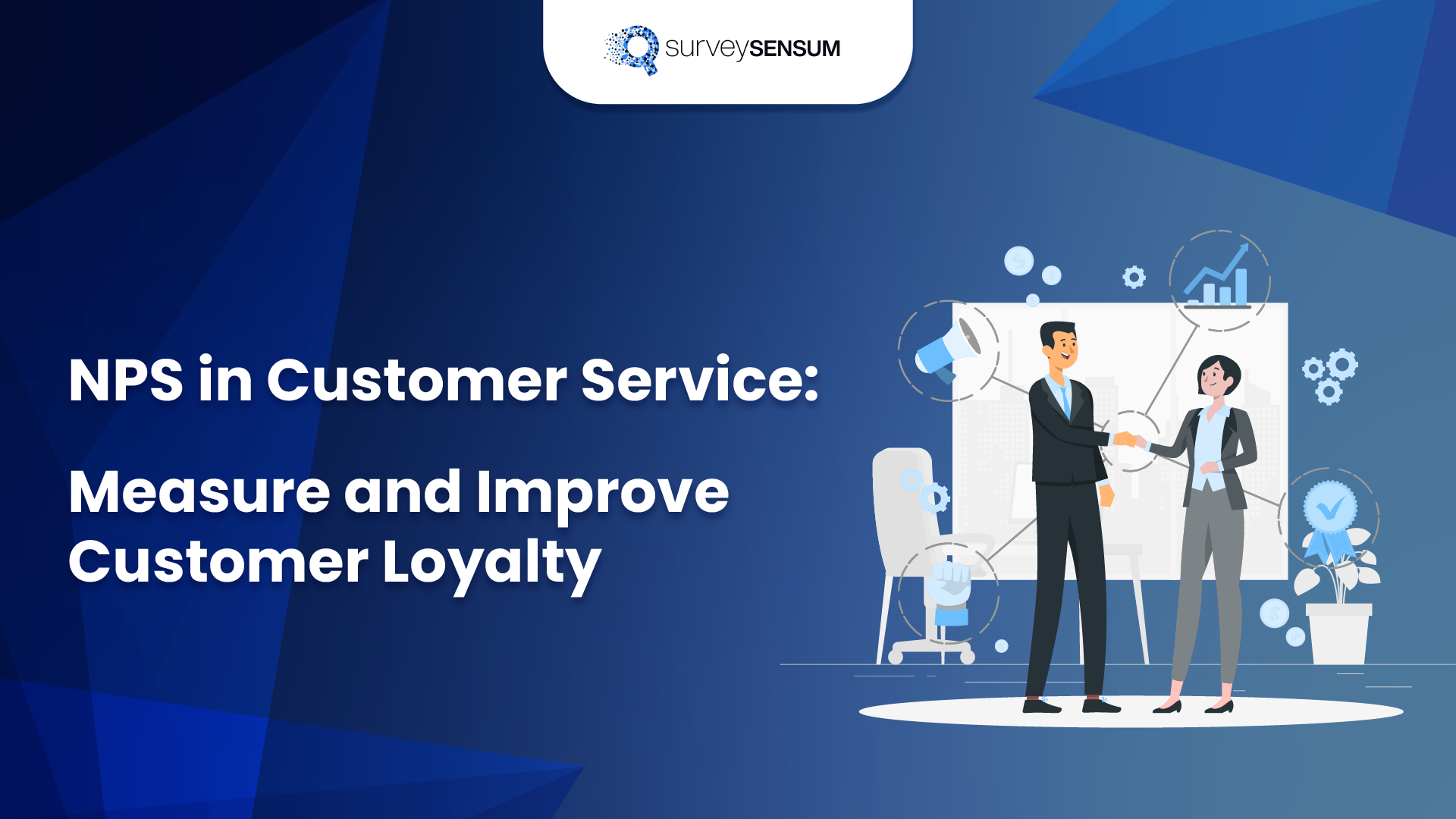
Did you know exceptional customer service is key to retaining customers?
Therefore, it is essential to prioritize your customers and deliver exceptional customer service. This fosters brand loyalty and retains customers. And to ensure that you are effectively measuring and improving customer loyalty, NPS is the right metric for it!
Many businesses use NPS as a tool to measure and improve customer loyalty. But how effective is NPS in customer service? And how does it work?
Let’s explore this in detail.
Net Promoter Score (NPS) is a popular tool for measuring customer loyalty, but its effectiveness in customer service depends on how it’s used.
NPS measures customer satisfaction and loyalty by asking customers –
Customers rate their likelihood on a scale of 0 to 10, with 10 being the most likely.
To use NPS effectively in customer service, you need to go beyond just asking the NPS question. And understand why customers gave you the score they did.
If they give you a high score, great!
But if they give you a low score, you need to dig deeper to find out why. This is where the follow-up questions come in. You could ask something like,
This question can help you identify specific areas where you can improve, like response times, product quality, or communication.
But the most important part of using NPS in customer service is what you do with the feedback you get.
You need to ACT on it!
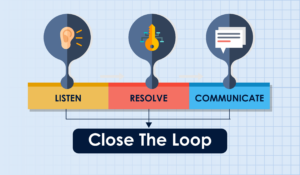
Use the insights you gain from NPS surveys to make meaningful changes to your customer service processes.
This could involve
By using NPS in customer service, you can create a loyal customer base that not only continues to do business with you but also recommends you to others.
Now comes another question that you all must be wondering.
YES!
If and when your customer faces an issue, they WILL contact your customer service team.
But what happens after your customer service team has listened, analyzed, and taken action to resolve their issue?
How will you get to know whether they are happy with your service or not?
— with NPS Surveys
Implementing NPS surveys is essential for your customer service team to measure customer satisfaction and loyalty.
When customers contact your team with an issue, it’s critical to know whether they’re happy with the resolution.
By launching an NPS program and sending transactional NPS surveys immediately after every customer service interaction, you can gain valuable insights into customer satisfaction.
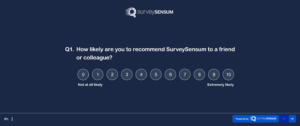
This will not only help you understand if the customers were happy with the response, but it will also share the details of what makes them happy and if they are looking out for more!
Since NPS is easy to calculate, you can further integrate it directly into your customer service dashboard. This will help the CX Exec to identify the performance of agents, recognize what’s working, and determine the areas of improvement.
With this information, you can strive to provide exceptional customer service and foster customer satisfaction and loyalty.
Here are the benefits of NPS that help you ace your customer service.
Implementing NPS surveys is essential to improve customer satisfaction and drive growth.
In fact, according to Forbes, 83% of companies that prioritize customer happiness also experience revenue growth.
By gathering feedback through NPS surveys, businesses can gain valuable insights into customer expectations and preferences. This information can help them tailor their customer service efforts to meet those expectations, leading to improved customer satisfaction and, ultimately, revenue growth.
Additionally, providing world class customer service can lead to customer referrals and repeat purchases, further driving revenue for the business.
In summary, implementing NPS surveys and focusing on delivering excellent customer service are crucial steps for businesses to drive growth and improve their bottom line.
Example:
A software company used NPS surveys to gather customer feedback about their product and customer service.
Problem: They discovered that many customers struggled with a particular feature and weren’t receiving adequate support to resolve their issues.
Solution: Using the feedback, the company’s customer service team worked to improve the feature’s functionality and created new training materials for support staff. They also increased their customer service team’s availability to handle support tickets related to the feature.
Result:
Many businesses use the NPS metric not only to gauge customer loyalty but also to strengthen their relationship with customers.
This sounds good! But HOW?
They do so by listening to their customers’ feedback and taking their satisfaction seriously.
Similarly, you can strengthen your customer relationship by actively listening to their feedback and taking appropriate action to close the feedback loop. When customers feel that their feedback is being heard and acted upon, they feel valued and respected.
As a result, a trusting relationship is established between you and your customers, leading to a decrease in customer churn rate and increased customer retention. This, in turn, leads to improved customer loyalty and ultimately drives growth for your business.
Example:
Problem: A telecommunications company used NPS surveys to gather customer feedback about their experience with customer service. They found out that their customers were unsatisfied with the waiting time when calling customer service.
Solution: The company took the feedback seriously and implemented several measures to improve the waiting time, such as
They also made sure to communicate these changes to their customers through email and social media.
Result:
Here’s a great example of how a brand like Olay listened to its customers, took action, and informed its customers about it.
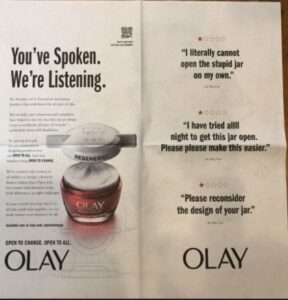
By analyzing the data received from NPS surveys, businesses can gain insights into their customers’ experiences and identify areas for improvement in their customer service.
For example, suppose a high percentage of customers give a low NPS score and provide feedback about long wait times on the phone. In that case, the business can take action to reduce wait times by hiring more customer service representatives through a applicant tracking system or implementing a more efficient call routing system.
Similarly, if customers consistently provide positive feedback about the helpfulness of the customer service team, the business can recognize and reward their high-performing team members, or even use their success as an example to train new hires.
NPS data can also help businesses identify trends in customer behavior and preferences, allowing them to tailor their products and services to better meet customer needs.
Example:
Problem: Let’s say a company launched an NPS survey and received customer feedback. Upon analyzing the feedback, they noticed that customers were unsatisfied with the company’s shipping process. The customers complained that the company’s delivery times were inconsistent and sometimes packages were delivered damaged.
Solution: The company’s customer service team decided to investigate further. They discovered that their shipping partner was not meeting the agreed-upon standards and that the company needed to change its logistics provider.
By using the NPS survey data to identify this issue, the company was able to make an informed decision to improve its shipping process.
Result: As a result, they reduced the number of damaged packages and improved their delivery times, leading to higher customer satisfaction and loyalty.
Now you know how you can harness the power of NPS surveys. But are there any risks associated with NPS?
Let’s understand its drawbacks.
NPS survey assumes that most customers have similar expectations, but that’s not always the case.
The interpretations of NPS surveys can vary from business to business, making it complex to compare and track improvements across industries. Therefore, NPS cannot always fit into all the approaches and is insufficient to capture all the nuances.
Solution:
That’s why it’s crucial to use open-ended questions and other survey metrics like CSAT, and CES to capture customer feedback in-depth.
After knowing the importance of NPS in customer service, its benefits, and drawbacks.
Now it’s time to move towards best practices to improve NPS in customer service.
To improve NPS, use these best practices to enhance your customer service and satisfaction levels:
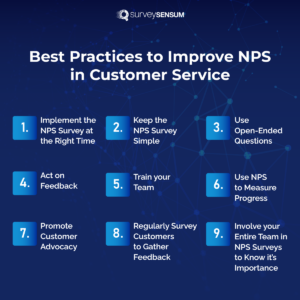
By implementing these best practices, you can use NPS to improve customer service and drive growth for your business.
The power of NPS surveys lies in how efficiently you launch and use them. So ensure you follow the given steps to use the NPS in customer service.
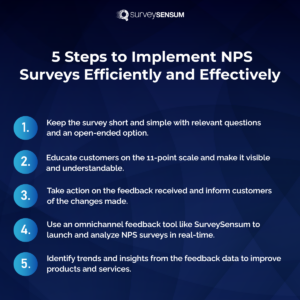
STEP 1: Make your survey SHORT and SIMPLE, asking the most relevant questions with an open-ended question to dive deeper into the customer feedback.
STEP 2: EDUCATE your customers on an 11-point scale where 0-6 are Detractors, 7-8 are Passives, and 9-10 are Promoters. Ensure the scale you’re using is appropriately visible and understandable so your customers can rate the score accordingly.
STEP 3: Take ACTION on the received feedback. Inform your customers that you’ve heard them and update them after taking the necessary action.
STEP 4: Use the OMNICHANNEL customer feedback tool like SurveySensum to conduct NPS surveys where you can launch NPS surveys, gather customer data, receive and analyze their feedback in real-time, and view their reports on the dashboard.
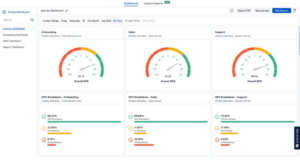
STEP 5: IDENTIFY the trends and insights by analyzing the customer feedback and later use that data to improve your products and services.
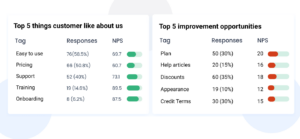
Here’s how Manulife increased its NPS score by 5 points in just 4 months with SurveySensum. Read their story →
While delivering exceptional customer service can drive your business, it can also pave the way to make it more successful.
Here’re some key takeaways that you must not forget while launching NPS in customer service:
All of these are key takeaways but remember that in the future, data is crucial.
You must set up the entire surveying process in such a way that you can make your information easily shareable and handy and can manage customers’ expectations in real-time.
